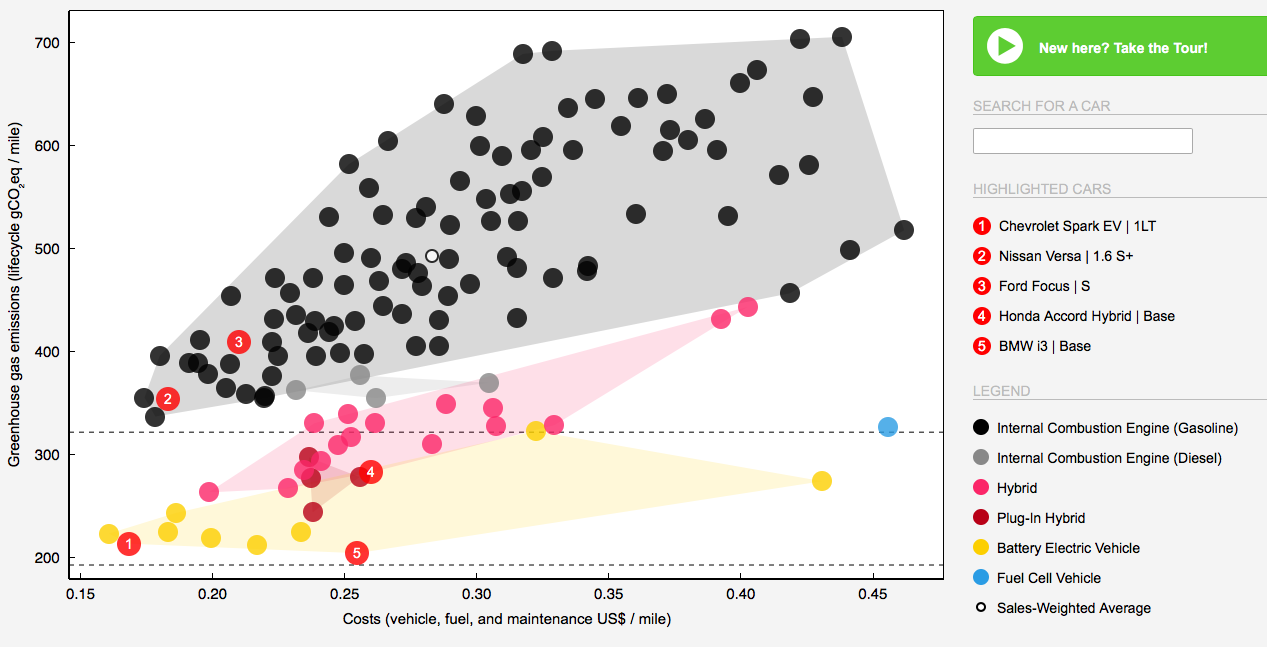Yes, you can afford an alt-fuel car.
A new study released this week by Massachusetts Institute of Technology compares the lifecycle cost and emissions of owning 125 different vehicles on the market, and guess what? It turns out that clean cars are a great deal for both the environment and your pocketbook.
Consumers who think they can’t afford to reduce their personal carbon footprint by buying an alt-fuel vehicle should take a look at carboncounter.com, an interactive online tool MIT developed to help consumers explore the data.

When the costs of purchase, fuel and maintenance are taken into account, along with federal tax credits, the researchers found that a number of battery electric vehicles, including Smart Fortwo and the Chevrolet Spark EV are the most affordable in the long term despite their deceptively higher sticker price.
Fuel cost is one obvious reason for long-term affordability. It’s much cheaper to fuel up on electricity than gas. The other is lower maintenance costs. EVs have fewer moving parts, less fluids (no oil changes!) and regenerative braking, which slows wear and tear to brakes.
Here’s what the accompanying paper, published in the journal Environmental Science & Technology, had to say about the Nissan Leaf:
“As one example, the most popular BEV [battery electric vehicle], the Nissan Leaf, costs 20% less than the sales-weighted average ICEV [internal combustion engine vehicle] in 2014 when vehicle, fuel, and maintenance costs are considered. Even before including tax refunds, the compact version of the Nissan Leaf matches the cost of the average compact ICEV sold in 2014. At the same time, the Leaf has half the GHG emissions intensity of the average ICEV sold in 2014 and 38% less than the average compact ICEV.”
The researchers evaluated the vehicles against U.S. emission-reduction targets for 2030, 2040 and 2050. They found that most of today’s hybrid and battery electric vehicles meet the 2030 target. But, as we know, plenty of higher emitting vehicles are on the market today. Looking to the 2050 targets, only electric vehicles fueled by almost carbon-free electric power will qualify, according to the study.
The bottom line is that this tool is extremely useful for car buyers who want to factor in environmental impacts in their decision-making process. Hovering over each dot reveals a vehicle’s make, model and list price information, and results can be customized by factors such as regional fuel prices and driving patterns.
This study comes on the heels of other positive news for electric vehicles. Another recent MIT study found that electric vehicles can cover the majority of our driving needs. And a study by the Consumer Federation of America found that interest in buying electric vehicles is growing. The group also just released a handy guide to buying electric vehicles.
Electric vehicles still make up a small slice of the U.S. vehicle market, but more are coming soon. Consider one next time you’re in the market.
